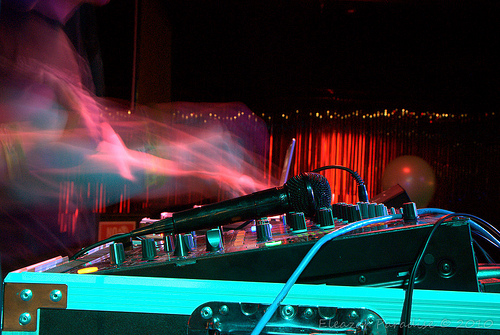
In the first part of this mini-series, we covered 5 Times When You Should Plan Your DJ Sets. The following part took the other viewpoint, highlighting 6 Reasons Why Not To Plan Your DJ Sets.
We’ve had some great advice in the comments to these posts, proving that the truth is this; the best DJs – those who play night after night – take the wisdom from both of these approaches to play DJ sets that are meticulously planned where it matters, but yet which still manage to give them plenty of flexibility to react to crowd, venue, new music, even their own mood, resulting in more vibrant, dynamic and ultimately more enjoyable DJ sets.
So here are seven secrets of the pros. Master some of these and you’ll be able to appear like you’re playing “by the seat of your pants”, when actually you’re benefiting from lots of smart planning to create that magic.
1. Pack your music carefully
Less is definitely more when it comes to preparing your tunes. Listen to ever single record you put in your crate for the night, so they’re all fresh in your mind. I like to pack roughly double the music I end up playing, giving me two choices for every eventual tune played – so I can vary the set but within preset confines. Listening to the tunes like this helps you to spot the “odd ones out” too that maybe don’t belong in tonight’s set after all.
2. Know the venue and the crowd well
Planning also involves visiting the venue and knowing the music they play and the type of crowd they get – if possible, of course. This helps you with point one above, as you’ve got a picture of the venue and crowd in your head as you’re picking or rejecting songs for your crate.
3. Organise your music into tightly focused playlists
It doesn’t really matter how you do this. I do it in groups like warm-up tunes, peak time tunes, last hour tunes, new tunes I ‘d like to play but may not (these can hang around for months while I find the right place to introduce them into a set), and surefire floorfillers / classics – kind of “get out of jail” tunes.
Knowing you can happily play half an hour from any of these playlists means that you can swap and change as the crowd and the night demands, while still actually playing a largely planned set.
4. Use loops, effects, EQ and volume to add a spontaneity to planned sets
If the crowd are loving a break, loop it and double its length before dropping back to the beat. If they’re grooving to the start of a house track quite happily, loop it and let it run for a few minutes before you break the loop and let the melody or bassline finally drop.
If they’re tiring after a few full-on tunes, next time your planned set takes a natural dip, drop the volume by a quarter and let the dancefloor regroup for five or ten minutes before building the volume back. Slowly drop the bass out before throwing it back in at a big point in the track. Use a little judiciously applied echo or other effect to add something unusual to a well-known track.
All of these techniques and many more can add DJing spontaneity to any set, even if it is otherwise 100% pre-planned.
5. Use key, genre and BPM sorting to make instant “planned” playlists
Playing music in a similar key can help you to make transitions smoother and thus appear planned when they’re not. Sorting by BPM can give you a choice of records to play next, removing panic and paralysis and suggesting just a few tunes meaning you now only have to pick the best one for a quick mix.
If you play a wildcard tune that goes down really well and suddenly think that actually, the crowd would like to hear half an hour of indie, or hip hop, or whatever style that tune is in, sorting by genre can give you an instant mini-set – especially when you then apply key and BPM sorts within that mini-set to further reinforce the illusion of careful pre-planning.
Using your software’s “prepare” functionality can allow you to make such mini-sets on the fly more easily.
6. Fall back on previous sets
What worked once will probably work again. Use the history feature of your software to remind yourself what has worked well for you in the past, and revert to a previously planned set or sets for a while. Continuity is one of the big plus points of playing regularly somewhere, and so this works especially well if you have, say, a weekly booking – there’s nothing wrong with letting your weekly sets slowly evolve rather than trying to reinvent the wheel by playing something completely different every time.
7. Plan your set 100%, but have a plan B too
If you really want to plan everything out that’s sometimes acceptable, but consider the fact that your carefully planned set may fall flat on its face. What will you do if it does? What do you think the crowd would want to hear instead? Make sure that you’ve at least planned an alternative set – a “plan B” – so if this happens, you can switch to that rather than getting tripped up totally.
How do you strike the balance between planning and spontaneity in your DJing? What tricks do you use to “pull something out of the bag” when inspiration runs dry and you need to get a next record on? Let us know your thoughts in the comments.








![Your 5 Proven Steps To DJing Like a Pro, Part 3: Mixing [Summer School Podcast] Your 5 Proven Steps To DJing Like a Pro, Part 3: Mixing [Summer School Podcast]](https://cdn.digitaldjtips.com/app/uploads/2024/07/18215143/summerpodcastfeat-150x150.jpg)